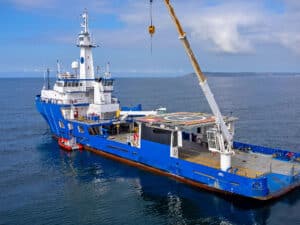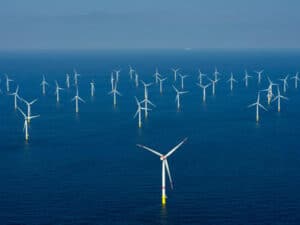
Swedish icebreaker tests new Arctic monitoring system
Written by Nick Blenkey AUGUST 13, 2013 — The Arctic is one of the world’s most environmentally sensitive areas, while also being one of the most difficult to protect against accidents. The Swedish Maritime Administration is now testing a new system for monitoring maritime traffic that will improve the potential for Arctic sea rescue, icebreaker assistance and environmental protection.
AUGUST 13, 2013 — The Arctic is one of the world’s most environmentally sensitive areas, while also being one of the most difficult to protect against accidents. The Swedish Maritime Administration is now testing a new system for monitoring maritime traffic that will improve the potential for Arctic sea rescue, icebreaker assistance and environmental protection.
Oden is owned by the SMA and manned by Viking Supply Ships AB. She was delivered by the Götaverken Arendal shipyard in 1989
The new tracking system will be tested during an Arctic expedition by the Swedish Maritime Administration icebreaker Oden as part of the MICE (MONALISA Ice) research and development project, which is being conducted in cooperation between the Swedish Maritime Administration and the Chalmers University of Technology in Gothenburg. MICE aims to capitalize on the more wide-ranging MONALISA project, which the Swedish Maritime Administration leads, and which permits the global monitoring of maritime traffic without the need for shore-based infrastructure, such as AIS base stations or radio communications
“Sweden has lengthy experience of winter navigation in the northern areas of the Baltic and Gulf of Bothnia. Our expertise is a valuable resource for safety and environmental protection now that new traffic patterns are emerging in the Arctic,” says Per Setterberg at the Swedish Maritime Administration, who is project manager for MICE. “We are capitalising on the Sea Traffic Management (STM) concept developed within the framework of the MONALISA project by adapting it for the Artic environment.”
The World Wildlife Fund (WWF) is positive about the project.
“As the sea ice melts in the Arctic, shipping will increase significantly and, thus, it is crucial to ensure high traffic quality and interweave comprehensive consideration of this sensitive and highly seasonal environment. Reducing the risk of collisions with drift ice and marine mammals, and avoiding arbitrary navigation during a spill period that could prove catastrophic for certain neighbouring bird sites during the pre-summer period for instance, requires a monitoring system that provides continual and proactive decision-making support for navigators,” says Mattias Rust, Maritime Officer at the WWF.
The solution is based on using vessels as base stations to communicate information regarding the surrounding traffic and the vessel’s own course, speed position and other relevant data. The information is interchanged with a shore-based coordination centre via a satellite link. The same satellite link is used for the interchange of navigation routes and other necessary communications between the vessel and the shore-based centre.
“This is a solution to the need for enhanced maritime traffic monitoring, coordination and support in the Artic region,” says Mr. Setterberg.





Leave a Reply
You must be logged in to post a comment.